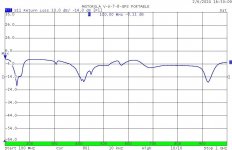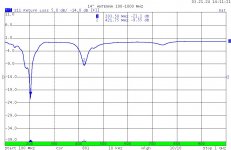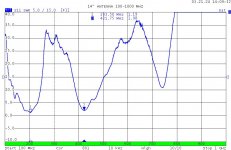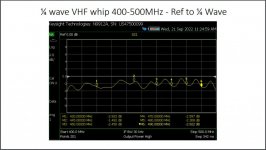CaptDan
Member
I am just asking the technical question, I understand there may be legal "issues" about specific equipment being approved or used on a particular band. The question I am asking is if my vehicle has a antenna designed for GMRS (UHF) frequencies and on occasion it was used on MURS (VHF) frequencies. Would it even work ? Damage antenna or equipment ?
For example, a group people are going somewhere together, like the beach. It's crowded, lots of people, kids with their roger beep radios. My buddy, a licensed Ham, says here use my walkie talkie, we're going to use MURS instead of GMRS because of all the kids on the radio. I understand his walkie talkie may not be 100% legit, ok maybe it's 0% legit for use on MURS because it's 5 watts rather than 2 watts. If we can just move past that for a moment, and get to the technical part. If I disconnect the antenna from the GMRS radio installed in my vehicle (VHF) and connect that antenna to his walkie talkie programmed for the 5 MURS frequencies (VHF) and then transmit, first is will it damage anything? Radio ? Antenna ? Second will it work? Will it actually do any good, connecting it to a UHF antenna mounted outside the vehicle.
Would I be better off just using the walkie talkie with the VHF antenna installed on the radio?
I am not installing a dual band antenna on my truck because I am migrating away from anything not legit, to a GMRS approved radio mounted in the truck. a GMRS antenna. Just being honest here, there may be times I know I'm going 55 in a 50mph zone, just as I know if I hook use his 5 watt walkie talkie on a 2 watt frequency, neither are legit.
Bottom line - the basic question without all that jibber jabber is, will a UHF radio work connected to a UHF antenna ?
For example, a group people are going somewhere together, like the beach. It's crowded, lots of people, kids with their roger beep radios. My buddy, a licensed Ham, says here use my walkie talkie, we're going to use MURS instead of GMRS because of all the kids on the radio. I understand his walkie talkie may not be 100% legit, ok maybe it's 0% legit for use on MURS because it's 5 watts rather than 2 watts. If we can just move past that for a moment, and get to the technical part. If I disconnect the antenna from the GMRS radio installed in my vehicle (VHF) and connect that antenna to his walkie talkie programmed for the 5 MURS frequencies (VHF) and then transmit, first is will it damage anything? Radio ? Antenna ? Second will it work? Will it actually do any good, connecting it to a UHF antenna mounted outside the vehicle.
Would I be better off just using the walkie talkie with the VHF antenna installed on the radio?
I am not installing a dual band antenna on my truck because I am migrating away from anything not legit, to a GMRS approved radio mounted in the truck. a GMRS antenna. Just being honest here, there may be times I know I'm going 55 in a 50mph zone, just as I know if I hook use his 5 watt walkie talkie on a 2 watt frequency, neither are legit.
Bottom line - the basic question without all that jibber jabber is, will a UHF radio work connected to a UHF antenna ?





